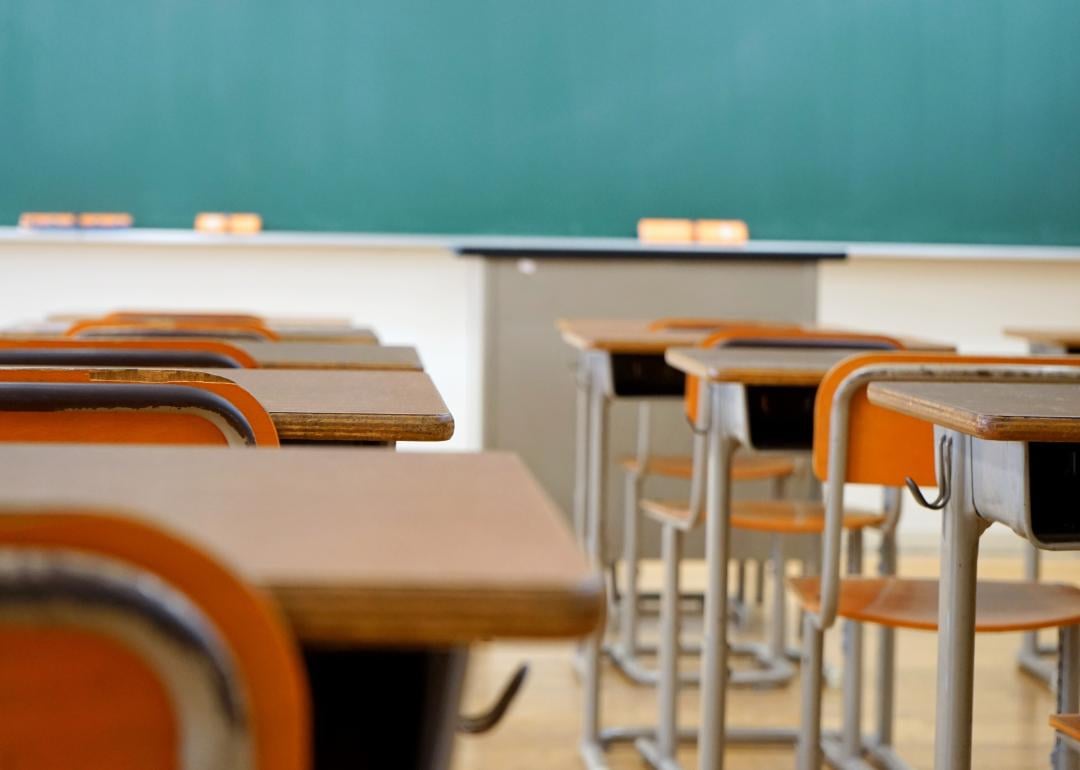
Best school districts in Alabama
A good school can lead to a lifetime of opportunities. Myriad data shows that lifetime earnings dramatically increase with every degree obtained. Bachelor's degree holders will earn an average of roughly $26,000 more each year than high school graduates. And for those who decide that pursuing a college degree is not the best postsecondary option, a good school will provide students with the tools and support to make that choice, and the foundational skills necessary to succeed in the workforce.
For many families, the school district is a top criteria when deciding where to buy a home. But this consideration and ability to choose is not a luxury all families can afford, especially in today's wildly competitive housing market.
One important proxy of a quality education is per-student spending. According to the most recent Census data available, the national average per-pupil expenditure in fiscal year 2019 was $13,187. Several recent studies suggest that increased spending per student correlates with higher academic achievement, particularly in districts serving predominantly low-income students. Since public schools are largely funded by property taxes, schools in low-income areas suffer the most from a lack of funding for critical expenditures like staff salaries and benefits, transportation, instructional resources, and support services.
There are more than 13,000 school districts in the U.S., each one slightly different, for better or worse, than the next. However, several common denominators exist and, when compared, can serve as indicators of what makes an impactful district.
Stacker compiled a list of the best school districts in Alabama using rankings from Niche. Niche ranks school districts based on a variety of criteria including academics (SAT/ACT scores and state proficiency tests), teacher salaries, expenses per student, and access to extracurricular activities.
#10. Muscle Shoals City Schools (Muscle Shoals)
- Number of schools: 7 (2,828 students)
- Graduation rate: 93% (61% reading proficient and 70% math proficient)
- Average teacher salary: $59,864 (17:1 student to teacher ratio)
#9. Saraland City Schools (Saraland)
- Number of schools: 4 (3,233 students)
- Graduation rate: 94% (64% reading proficient and 69% math proficient)
- Average teacher salary: $47,433 (18:1 student to teacher ratio)
#8. Hartselle City Schools (Hartselle)
- Number of schools: 6 (3,519 students)
- Graduation rate: 97% (65% reading proficient and 66% math proficient)
- Average teacher salary: $53,031 (16:1 student to teacher ratio)
#7. Trussville City Schools (Trussville)
- Number of schools: 5 (4,823 students)
- Graduation rate: 98% (71% reading proficient and 76% math proficient)
- Average teacher salary: $57,445 (17:1 student to teacher ratio)
#6. Auburn City Schools (Auburn)
- Number of schools: 13 (8,930 students)
- Graduation rate: 95% (64% reading proficient and 72% math proficient)
- Average teacher salary: $56,811 (18:1 student to teacher ratio)
#5. Hoover City Schools (Hoover)
- Number of schools: 18 (14,061 students)
- Graduation rate: 95% (65% reading proficient and 70% math proficient)
- Average teacher salary: $57,512 (14:1 student to teacher ratio)
#4. Vestavia Hills City Schools (Vestavia Hills)
- Number of schools: 8 (7,137 students)
- Graduation rate: 95% (79% reading proficient and 82% math proficient)
- Average teacher salary: $60,149 (16:1 student to teacher ratio)
#3. Mountain Brook City Schools (Mountain Brook)
- Number of schools: 6 (4,367 students)
- Graduation rate: 98% (83% reading proficient and 89% math proficient)
- Average teacher salary: $65,452 (13:1 student to teacher ratio)
#2. Madison City Schools (Madison)
- Number of schools: 11 (11,695 students)
- Graduation rate: 97% (73% reading proficient and 76% math proficient)
- Average teacher salary: $56,964 (18:1 student to teacher ratio)
#1. Homewood City Schools (Homewood)
- Number of schools: 5 (4,217 students)
- Graduation rate: 96% (68% reading proficient and 75% math proficient)
- Average teacher salary: $53,434 (14:1 student to teacher ratio)



